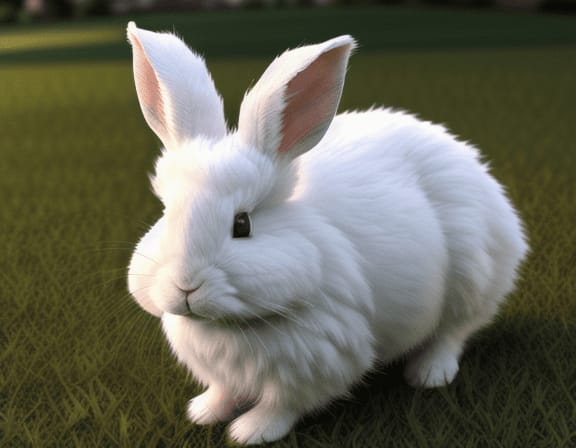Angora rabbits are delightful pets with plush, fluffy manes and a friendly nature. This breed has a fascinating history and unique characteristics.
They’re born in various colors, each more vibrant than the next. They have a lifespan of 7 to 12 years. They’re popular pets worldwide for their plush fur and playful disposition.
Raising an Angora rabbit can be rewarding. They’ll bring joy and comfort to your home with the right care and love.
So, let’s learn more about these charming bunnies and how to care for them.
Table of Contents
The Main Differences Between Angora and Lionhead Rabbits
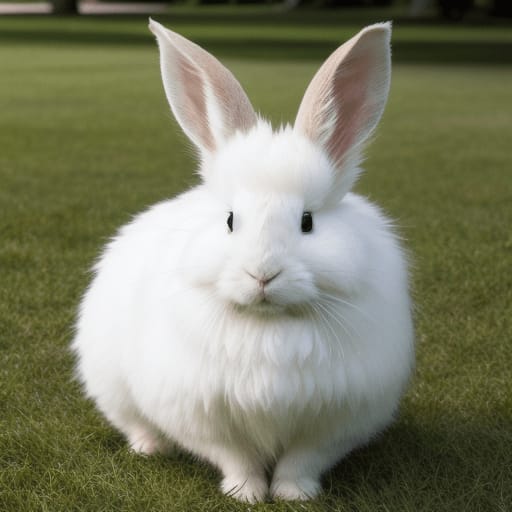
Angora and Lionhead rabbits are two distinctive breeds, each with unique features. Angora rabbits are famous for their luxurious fur. While lionheads, rabbits are known for their ‘mane’ of fur around their heads, resembling a lion.
Angora rabbits are larger, typically weighing between 4 to 12 pounds. Their thick, long fur needs frequent grooming, sometimes daily, to prevent matting.
On the other hand, lionhead rabbits are smaller, usually weighing between 2.5 to 3.7 pounds. They have different grooming requirements due to their shorter fur.
Both breeds have friendly personalities, but their care requirements differ, primarily due to their fur type. These differences make each breed unique and suitable for different pet owners. Understanding these variations is essential to provide the right care for your bunny.
Housing and Environment
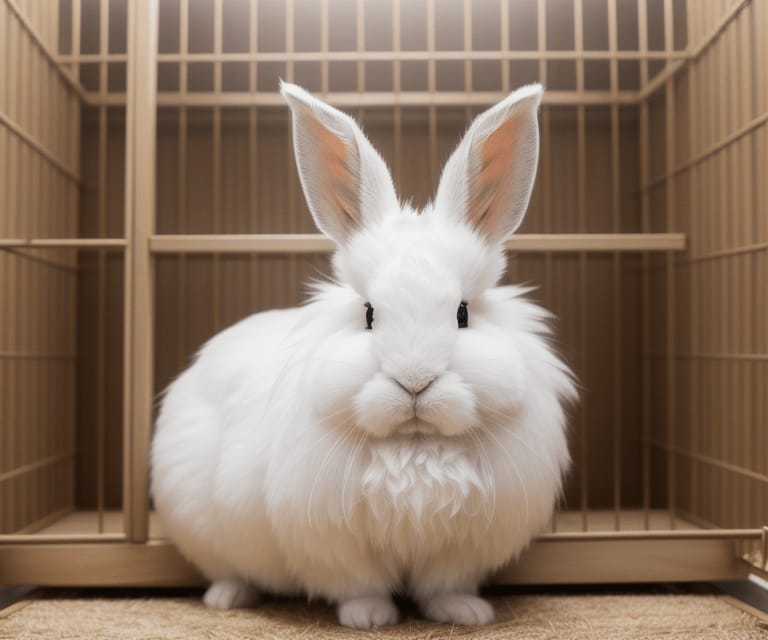
Angora rabbits need a suitable environment. They need a spacious cage, at least four times their size. This allows them to stretch, play, and engage in natural bunny behavior.
Angora rabbits need a large cage with a solid floor, a nesting box, and a calm, draft-free environment away from sunlight and heat sources.
They’re sensitive to heat due to their dense fur. A consistent temperature, ideally between 60-70°F, ensures their comfort and health. Regular cage cleaning prevents droppings and uneaten food build-up, maintaining a clean, safe environment for your rabbit.
Diet and Nutrition
A balanced and nutrition-rich diet is vital when caring for an Angora rabbit. Rabbit diet greatly impacts its health, longevity, and good physical and mental health. Hence, it’s crucial to understand what includes a nutritious meal for these furry bunnies.
High Fiber Diet
The most important component of an Angora rabbit’s diet is fiber. High-quality hay, rich in fiber, ensures their digestive health and boosts the necessary teeth wear. Providing a consistent supply of hay, accounting for 70% of their diet, is essential.
Fresh Food
Adding fresh vegetables daily increases Angora rabbit’s diet with vital nutrients. Bell peppers, broccoli, cucumbers, and leafy greens are all safe to eat. Also, limit the amount of fruits you give your bunny because they are high in sugar.
Hay Varieties
Offering a variety of hay diversifies their nutrient intake and keeps them interested. Timothy hay is preferred, but supplementing it with orchard or meadow hay introduces nutritional variety and prevents monotony in their diet.
Grooming and Coat Care
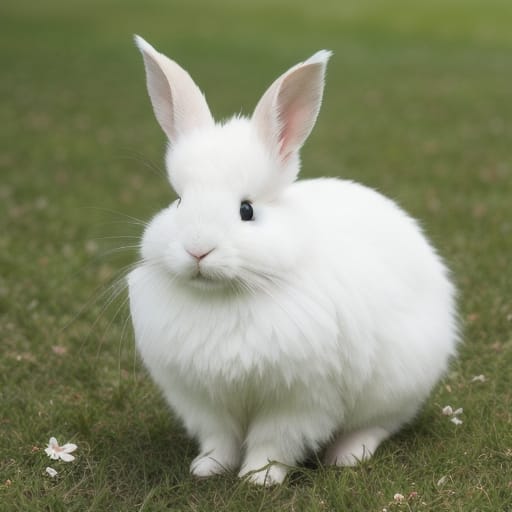
Maintaining an Angora rabbit’s unique, fluffy coat is no small task. Grooming is critical for their health and comfort, requiring regular attention and specific techniques. The steps and tools involved in grooming an Angora rabbit are outlined below.
Main Steps of Grooming
Angora rabbits are well known for their luxurious and fluffy coats. But they come with a responsibility that every owner should know. Grooming is a beauty routine and an important part of maintaining rabbit health and well-being.
- Brushing the Coat: Start gentle brushing of the rabbit’s coat. Regular, light brushing helps keep the fur from tangling or matting. Daily grooming is vital during shedding periods to prevent the rabbit from ingesting loose hair, which could lead to serious health issues.
- Skin Inspections: The next step involves regularly checking the rabbit’s skin. This is important to identify potential parasites or skin conditions early on, allowing for prompt treatment.
- Nail Trimming: The final step is nail trimming. Keeping the nails at a safe length prevents any injury or discomfort that long, sharp nails can cause the rabbit. Always remember to use a nail clipper designed specifically for small animals.
After following these steps, your Angora rabbit should feel healthier and more comfortable. Grooming your pet regularly is a good way to bond with them and build a trusting and caring relationship.
Suitable Tools and Products
Various grooming tools are essential for Angora rabbit care, including a slicker brush, fur clippers, and nail clippers. To keep rabbits cool, fur clippers are essential for trimming, especially in the warmer seasons. Nail clippers designed for small animals are essential for keeping nails in check. Always select safe, rabbit-approved, and designed products for delicate skin and fur use.
Health and Wellness
Caring for an Angora rabbit’s health and wellness demands keen attention. This is due to the breed’s unique health issues that pet owners need to know.
Common Health Problems
Angora rabbits can suffer from wool block, a condition where fur ingested during self-grooming accumulates in their digestive tract. Heatstroke is another risk due to their dense coat, making them prone to overheating. Dental disease is also a frequent problem with growing teeth.
Signs of Illness
Rapid changes in an Angora rabbit’s behavior or eating habits often signal illness. Watch for a lack of appetite, less movement, or unusual droppings. A messy coat, often due to neglectful grooming, can show discomfort or illness.
Preventive Care Tips
Providing a balanced diet rich in fiber can avoid a wool block. Regular brushing prevents fur ingestion and heatstroke. Always provide a cool, shaded area for your rabbit during hot weather. Regular dental check-ups with a vet can avoid tooth issues.
Preventive Angora rabbit care, like love and attention, is key to keeping an Angora rabbit healthy and happy.
Breeding and Reproduction: Tips for Angora Rabbits
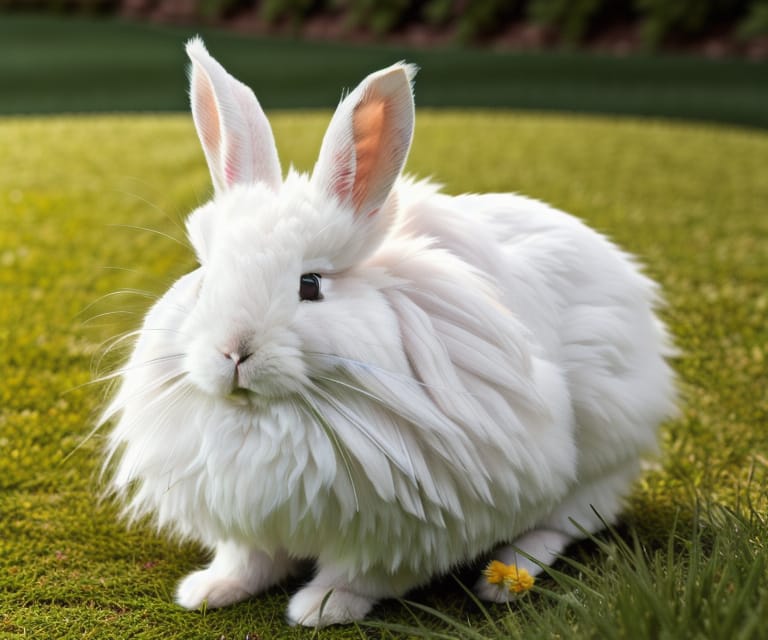
Breeding Angora rabbits requires careful planning and understanding. Let’s dive into some essential tips to ensure successful reproduction.
For starters, it’s crucial to wait until the rabbits are mature enough for breeding, which is generally 8 months old. It’s also worth noting that female rabbits, known as does, are receptive to mating many times a year. But rest between litters is vital for the doe’s health.
Watch their interaction closely when introducing the doe to the male or buck. Ensure mating occurs in a neutral, stress-free environment. A pregnancy time of 32 days after mating is common before the female angora rabbit gives birth to a litter.
Finally, prepare a cozy and secure nesting box for the expecting doe. She will pull fur from her chest and abdomen to make a soft bed for her offspring. This is a sign that the birth of the litter is near.
Remember, breeding rabbits should not be taken lightly. It involves careful planning, time, and resources to ensure both parents’ and their offspring’s health and wellness.
Exercise and Enrichment
Encouraging active play and socialization is key to an Angora rabbit’s overall health and happiness. Let’s look at two main elements of a successful exercise and enrichment plan: interactive toys and social interactions.
Interactive Toys
Interactive toys keep Angora rabbits mentally stimulated and physically active. Simple things like cardboard tubes, balls, or puzzle feeders can make for fun play sessions. These toys encourage exploration and problem-solving while also promoting physical movement to keep your rabbit fit.
Social Interactions
Angora rabbits rely on social interactions. Social interaction is crucial for their emotional health, whether with their human family members or other rabbits.
Remember, bonding with a rabbit takes time and patience. Slow, calm interactions, where the rabbit can approach at its own pace, can build trust. If you have more than one rabbit, ensure to introduce them slowly and in a safe place so that they can build a good relationship.
Handling and Bonding
Handling and bonding with an Angora rabbit is an enriching experience that strengthens the bond between you and your pet. But, there are correct methods to ensure rabbit comfort and safety.
Rabbits are ground-dwelling animals by nature. They often feel insecure when lifted off the ground. If you pick up your Angora rabbit, always support its hindquarters. This technique prevents the rabbit from kicking out and injuring itself.
Bonding with your rabbit involves spending quality time together. Start with brief, gentle strokes on the rabbit’s back, slowly increasing the time as your rabbit becomes comfortable. Avoid touching their underbelly and feet, which they generally dislike.
Always be patient and gentle with your Angora rabbit. It may take time, but building a bond based on trust and kindness is worth every moment. Remember, every interaction with your rabbit is an opportunity to strengthen your bond.
Conclusion
Understanding their specific requirements is essential for Angora rabbit care. Their diet should include plenty of fiber-rich hay and fresh vegetables. Regular grooming is crucial due to their long and lush coat.
They need space to play and rest. They love socializing, so interactive toys and quality time spent with you are beneficial. Regular health check-ups ensure wellness.
Building a bond with your rabbit takes patience and kindness. Your care and understanding will strengthen this bond. You’ll have a happy and healthy pet by focusing on their needs and ensuring their health and happiness.
Common Mistakes to Avoid in Angora Rabbit Care
Caring for Angora rabbits can be a learning curve. Certain mistakes, although unintentional, can affect their health.
One common mistake is neglecting their diet. Fiber-rich food is necessary for Angora rabbits. Not providing enough can lead to digestive issues.
Ignoring grooming is another misstep. Angora rabbits have dense, long fur. It’s essential to brush their coat often to prevent matting and hairballs.
Insufficient exercise space is also a concern. Angora rabbits are active and need room to hop and explore. Keeping them confined may lead to obesity and boredom.
Not spending enough time with them can impact their happiness. Angora rabbits are social creatures. They feel more fulfilled when they’re part of the family activities. Ignoring their need for interaction could lead to stress and loneliness.
Being aware of these pitfalls in Angora rabbit care can help you provide your bunny with a healthy and happy life.
FAQs
What do Angora rabbits need?
Angora rabbits need a spacious and clean living environment, a high-fiber diet mostly from hay, regular grooming due to their long fur, plenty of exercise, social interaction, and regular health check-ups. They also need their owners to understand and cater to their unique needs.
Are Angora rabbits aggressive?
No, Angora rabbits are not aggressive. They’re known for their friendly and gentle nature. But, they can become defensive if they feel threatened or not properly socialized.
What are Angora rabbits’ favorite foods?
Angora rabbits love to munch on a variety of hay, which should make up the majority of their diet.
What can Angora rabbits not eat?
Angora rabbits should not eat high-sugar or high-fat foods, like chocolate, biscuits, or other human junk food. Certain fruits and vegetables, like onions, potatoes, rhubarb, and seeds, are unsafe for rabbits. Also, avoid the alfalfa ray for adult angora rabbits as they are high in calcium.
Alina Hartley is a small-town girl with a ginormous love of bearded dragons. It all started with Winchester, a baby bearded who was abandoned at the shelter by his former owners because of a birth defect that caused one front leg to be shorter than the other. Alina originally went to the shelter looking for a guinea pig, but one look at Winchester and it was love at first sight. From that day on, Alina has dedicated her life to learning everything she can about bearded dragons. She loves helping new beardie parents start their incredible journey with these magnificent reptiles.
Follow her on:
LINKEDIN
TWITTER.
Read her latest articles HERE
Learn more about her HERE.

